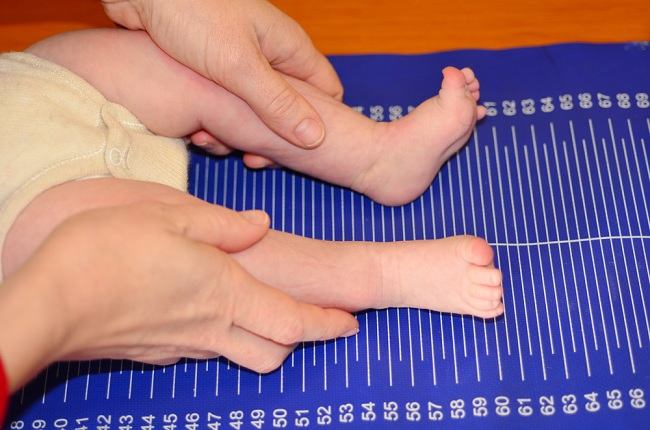Levetiracetam is a medication to relieve seizures caused by epilepsy. This drug can be used alone or in combination with other drugs. This medicine should only be used according to a doctor's prescription.
The exact mode of action of this drug is not known. However, the anticonvulsant effect of these drugs is thought to stem from their ability to block electrical activity associated with calcium channels or their ability to affect the release of certain chemicals in the brain (neurotransmitter).

Levetiracetam trademarks: Keppra, Lethira, Levetiracetam, Levexa
What is Levetiracetam
| group | Prescription drugs |
| Category | Anticonvulsants |
| Benefit | Relieves seizures due to epilepsy |
| Consumed by | Adults and children |
| Levetiracetam for pregnant and lactating women | Category C: Animal studies have shown adverse effects on the fetus, but there are no controlled studies in pregnant women. Drugs should only be used if the expected benefit outweighs the risk to the fetus. Levetiracetam may be absorbed into breast milk. If you are breastfeeding, do not use this medicine without consulting your doctor first. |
| Drug form | Tablet |
Warnings Before Taking Levetiracetam
Levetiracetam should only be used as prescribed by a doctor. The following are some things you need to pay attention to before taking levetiracetam:
- Tell your doctor about any allergies you have. Levetiracetam should not be given to patients who are allergic to this drug.
- Tell your doctor if you have or are currently suffering from kidney disease or a mental disorder, such as depression or psychosis.
- Tell your doctor if you have ever hurt yourself or have suicidal thoughts.
- Tell your doctor if you are pregnant, breastfeeding, or planning a pregnancy.
- Avoid driving a vehicle or doing activities that require alertness while you are taking levetiracetam, as this medicine can cause dizziness and drowsiness.
- Tell your doctor that you are being treated with levetiracetam if you are planning to have surgery or certain medical procedures.
- Talk to your doctor about using levetiracetam for children under 4 years of age or the elderly, because its use in these age groups can increase the risk of side effects.
- Do not consume alcoholic beverages while you are taking levetiracetam, as this increases the risk of side effects.
- Tell your doctor if you are taking certain medications, supplements, or herbal products.
- See your doctor immediately if you have an allergic reaction to the drug, serious side effects, or an overdose after taking levetiracetam
Levetiracetam Dosage and Directions
The dose of levetiracetam is different for each patient. The doctor will determine the dose according to the patient's age and the condition to be treated. Here is the explanation:
Purpose: As a single therapy to relieve seizures
- Mature: The initial dose is 250 mg, 2 times a day. The dose may be increased to 500 mg, 2 times daily, after 2 weeks of treatment. The maximum dose is 1500 mg, 2 times a day.
Purpose: As an adjunct therapy to relieve seizures
- Mature: The initial dose is 500 mg, 2 times a day. The dose can be reduced or increased from the initial dose after 2–4 weeks of treatment. The maximum dose is 1500 mg, 2 times a day.
- Children aged 1–5 months: The initial dose is 14 mg/kg body weight per day. The dose can be increased after 2 weeks. The maximum dose is 42 mg/kg body weight per day.
- Children aged 6 months with a weight <50 kg: The initial dose is 20 mg/kg body weight per day. The dose can be increased after 2 weeks. The maximum dose is 60 mg/kg body weight per day.
How to Take Levetiracetam Correctly
Take levetiracetam as directed by your doctor and the instructions on the medicine package. Do not change the dose without consulting your doctor first. Levetiracetam can be taken before or after meals.
Take levetiracetam tablets whole. Do not crush, chew, or split this medication as this may affect the effectiveness of the drug.
If you forget to take levetiracetam, take it as soon as you remember. If it is near the time of your next dose, ignore the missed dose. Do not double the dose of levetiracetam to make up for a missed dose.
Do not stop treatment with levetiracetam even if you feel better, unless advised by your doctor.
During treatment, you will undergo regular kidney function tests to monitor your condition, response to therapy, and possible side effects.
Store levetiracetam in a place away from direct sunlight. Keep levetiracetam out of the reach of children.
Levetiracetam Interactions with Other Drugs
There are several interactions that can occur if levetiracetam is taken with certain drugs, including:
- Increased risk of side effects, such as dizziness, drowsiness, confusion, or difficulty concentrating, if taken with propoxyphene, sodium oxybate, or ketamine
- Increased toxic effect of methotrexate
- Increased risk of fatal side effects, such as coma, when taken with buprenorphine
Levetiracetam Side Effects and Dangers
Some of the side effects that can occur after taking levetiracetam are:
- Dizziness or headache
- Nasal congestion
- Drowsiness
- Fatigue
- Nausea and vomiting
Check with a doctor if the complaints mentioned above do not go away or get worse. See your doctor right away if you have an allergic reaction to a drug or a serious side effect, such as:
- There is a desire to hurt yourself or commit suicide
- Impaired kidney function, which can be characterized by infrequent urination, very little urine, or swelling in the legs
- Seizures that are severe or occur more frequently
- Loss of balance, hallucinations, anxiety, restlessness, or irritability
- Infectious disease, which can be characterized by symptoms such as fever or sore throat that does not improve
- Easy bruising
- Anemia, which can be characterized by symptoms such as pale skin, weakness, fatigue, or lethargy









